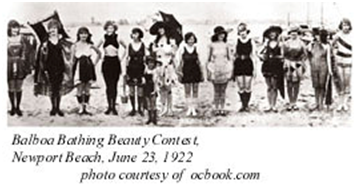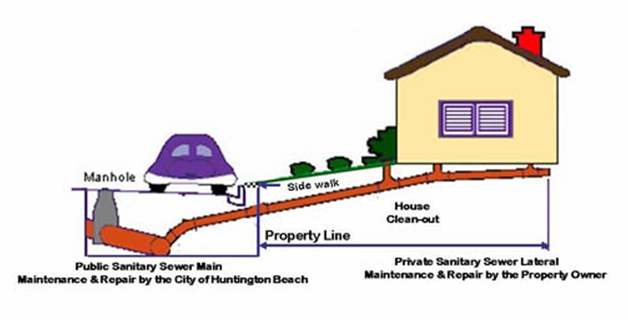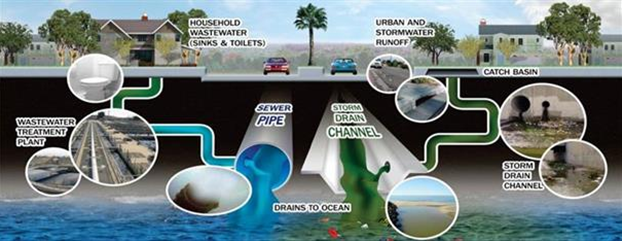HISTORY OF THE CITY OF NEWPORT BEACH

When Captain Samuel S. Dunnells successfully steered his 105-ton river steamer Vaquero through upper Newport Bay in 1870, James and Robert McFadden rushed from Northern California by stagecoach to mark the inaugural voyage.
Dunnell’s’ trip cast new light on the bay, which many had said was too treacherous for travel. But the principal landowners in the area – the McFadden brothers and James Irvine – thought they had something after Dunnells’ trip. A “new port,” they mused, and the name stuck, according to the Newport Beach Historical Society.
More than 100 years later, Newport Beach’s harbor is crowded with pleasure, fishing and tour boats, and its streets are busy with shoppers browsing at Fashion Island mall, tourists enjoying Balboa bars on Balboa Island and surfers tackling The Wedge or other hot spots along the city’s 6.2 miles of beaches.
Newport wasn’t always such a desirable place. In the mid-1800s, the state of California sold parts of Harbor, Balboa, and Lido islands for $1 an acre as “swamp and overflow land,” according to the Newport Beach Historical Society.
The McFaddens saw something else. In 1888, they decided their shipping business would be more successful if they moved it from the inner shores of the bay to the oceanfront, where they could build a wharf. McFadden Wharf soon became the largest business in newly created Orange County, according to the the historical society.
In August 1906, residents in the booming bay town voted to incorporate. The vote was 42-12 to become the city of Newport Beach. Back then, bayfront houses sold for as little as $500. Today, the median price of homes in Newport Beach is approximately $545,000.
Residents identify closely with their “villages” – including Corona del Mar, West Newport and the Harbor, Lido and Balboa islands – rather than Newport Beach itself. Homes are separated from busy commercial areas such as Lido Village, Mariner’s Mile and Newport Center.
One hundred years after the McFaddens built what is now Newport Pier, the city still revels in its ocean roots. Back then, only a few dozen summer cottages could be rented, and a few dozen people called Newport home.
WHERE DOES NEWPORT BEACH CITY WATER COME FROM?
Water Production operates, maintains, and disinfects the City of Newport Beach’s water supply. The division operates two well sites that produce groundwater from the Orange County Basin as well as three water reservoirs to receive, store and distribute the City’s water. Other water facilities that assist in the distribution and treatment process include five water pump stations, five Metropolitan Water District interconnections, and 42 water pressure regulating stations. Water Production also manages SCADA (Supervisory Control and Data Acquisition) which monitors and controls the pumps in the City’s water wastewater and gas systems.
Orange County’s water supplies are a blend of groundwater managed by OCWD and water imported from Northern California and the Colorado River by the Municipal Water District of Orange County (MWDOC) via the MWDSC. Groundwater comes from a natural underground aquifer that is replenished with water from the Santa Ana River, local rainfall and imported water. The groundwater basin is 350 square miles and lies beneath north and central Orange County from Irvine to the Los Angeles County border and from Yorba Linda to the Pacific Ocean. More than 20 cities and retail water districts draw from the basin to provide water to homes and businesses.
ARE THERE CONTAMINANTS IN NEWPORT BEACH CITY WATER?
The sources of drinking water (both tap water and bottled water) include rivers, lakes, streams, ponds, reservoirs, springs and wells. As water travels over the surface of the land or through the layers of the ground it dissolves naturally-occurring minerals and, in some cases, radioactive material, and can pick up substances resulting from the presence of animal and human activity.
Contaminants that may be present in source water include:
Pesticides and herbicides, which may come from a variety of sources such as agriculture, urban stormwater runoff, and residential uses.
Microbial contaminants, such as viruses and bacteria, which may come from sewage treatment
plants, septic systems, agricultural livestock operations, and wildlife.
Radioactive contaminants, which can be naturally occurring or be the result of oil and gas production or mining activities.
Inorganic contaminants, such as salts and metals, which can be naturally occurring or result from urban storm runoff, industrial or domestic wastewater discharges, oil and gas production, mining and farming.
Organic chemical contaminants, including synthetic and volatile organic chemicals, which are by-products of industrial processes and petroleum production, and can also come from gasoline stations, urban stormwater runoff, agricultural application and septic systems
SHOULD I DRINK AND BATHE WITH WESTMINSTER CITY WATER STRAIGHT FROM MY FAUCET?
Some people may be more vulnerable to contaminants in drinking water than the general population. Immuno-compromised people, such as those with cancer who are undergoing chemotherapy, persons who have had organ transplants, people with HIV/AIDS or other immune system disorders, some elderly persons and infants can be particularly at risk from infections. These people should seek advice about drinking water from their health care providers.
The USEPA and the federal Centers for Disease Control guidelines on appropriate means to lessen the risk of infection by Cryptosporidium and other microbial contaminants are available from USEPA’s Safe Drinking Water
https://www.newportbeachca.gov/home/showdocument?id=61257
Complete Plumbing recommends installing a Catalytic Carbon Whole house water filtration system by Aqualistic Water Products to remove most of the harmful chemicals in your city water, leaving you with bottled quality water at every faucet in your home.
NEWPORT BEACH PLUMBING TIPS
Fix leaky faucets. For every leak stopped, you can save 20 gallons of water per day.
Develop a watering schedule for your irrigation system. To learn more, visit www.bewaterwise.com/calculator.html.
Use native plants in your landscaping. Planting and maintaining beautiful California native and water-friendly plants can save between 1,000 and 1,800 gallons per month.
Install a high efficiency toilet or clothes washer. A temporary rebate program is still available. Other rebates are also available for sprinklers and artificial turf. To learn more, visitwww.ocwatersmart.com.
MWDSC has its own water conservation website. To find out more information on water-saving plants and other useful tips, visit www.bewaterwise.com.
NEWPORT BEACH RESIDENTS should make sure that their plumbing systems are in good working order and are leak-free. This is important, not only for saving money on your water bill and limiting damages to property, but it is our responsibility to provide clean freshwater for future generations.
DID YOU KNOW?
Water Leaks:
- Nationwide, more than 1 trillion gallons of water are lost annually due to household leaks. That’s equal to the annual water use of more than 11 million homes.
- The average household can waste more than 10,000 gallons each year due to correctable leaks. That’s enough to wash 270 loads of laundry!
- Ten percent of homes have leaks that waste 90 gallons or more per day! Common sources include toilets, faucets, showerheads, and landscape irrigation. But you should also consider less obvious sources of leaks: water heaters, ice makers, dishwashers, and filtration systems. Many of these are easily correctable, and fixing them can save about 10 percent on the average water bill.
- Be sure to check your toilet for leaks at least once a year. Put food coloring in the tank. If it seeps into the bowl without flushing, there’s a leak. And if your toilet flapper doesn’t close properly after flushing, replace it.
- Remember, one drip a second adds up to five gallons lost per day!
So regularly check your faucets and showerheads, as well as all hoses and connectors. - Many household leaks can be solved with simple tools and a little education — and fortunately, Do-It-Yourselfers have access to multiple resources. But even if you must pay for repairs, you will still save money in the long run. For more information on water conservation, visit ocwatersmart.com.
- Complete plumbing provides leak detection of even the smallest amount of water which could prevent costly water bills and possible damage due to water leaks
- Complete plumbing utilizes automatic water shut off valves that detect leaks, automatically shuts off the water to your home then sends you an alert via a smartphone app. You can turn the water on and off, monitor water usage and temperature right from your phone!
NEWPORT BEACH CITY SEWER DRAINAGE SYSTEM
Wastewater is responsible for the collection of residential and commercial wastewater. This Division has three sub-sections: Pump Station Operation, Cleaning Operation and Construction Operation. These three sub-sections provide service relating to pump station repair and maintenance, sewer main, lateral and manhole cleaning, sewer blockage, and odor, and sewer main and lateral breaks and repairs.
If you have a wastewater concern please call 949-644-3011. If an emergency occurs after regular working hours or weekends, please contact the Newport Beach Police Department at 949-944-3717 and they will dispatch an emergency crew.
- Most Newport Beach homes have just one main sewer pipe that connects the sewer system from their house to the city’s main sewer system. Homeowners are required to maintain that sewer pipe up to and including the middle of the street and may be responsible for repair costs should a problem occur.
- Complete Plumbing has the capability to use a sewer drain camera and location device to inspect sewer lines for breaks, cracks root intrusions. This simple examination of your sewer system may save thousands of dollars in repair costs.


Stormwater is water from rain that does not soak into the ground. It flows over paved areas like streets, sidewalks, and parking lots, as well as roofs and sloped lawns. As it flows, the stormwater collects and carries pollutants such as litter, pet waste, pesticides, fertilizers, and motor oil. This “toxic soup” then flows through a massive system of pipes and channels directly into our local waterways and the ocean.
What is the difference between the storm drain system and the sanitary sewer system?
The storm drain system and sanitary sewer system are both large conveyance systems of underground pipes. This leads to the misconception that the systems are one and the same. They are in fact separated and serve different purposes.
The sanitary sewer system transports domestic sewage to a treatment plant. Domestic sewage includes wastewater from household and commercial plumbing, such as toilets, showers, and sinks. There, contaminants are removed from the sewage through a multi-stage process, which includes settling, filtering, and biological and chemical treatment. The treated water is then discharged into local waterways or used as reclaimed water.
The storm drain system, on the other hand, was designed to prevent cities from flooding. Its purpose is to quickly transport rain runoff (stormwater) away from the city and into the nearest waterway, without treatment. And so, any pollution carried by stormwater also enters our waterways untreated.

We have been serving Newport Beach Residents for over 30 years and know a lot about Newport Beach water filtration systems, Newport BeachPlumbing Systems, Newport Beach heating, and air conditioning systems, Newport Beach tankless water heaters, Newport Beach drain cleaning
Call and ask about our NewportBeach residents specials
READY TO GET STARTED?